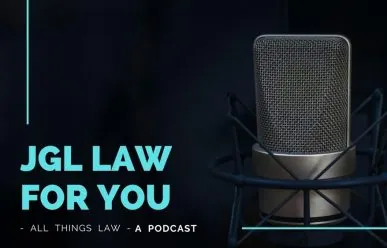Social media, like Facebook, Instagram, and Twitter, allow people to connect with friends and family, sharing information, photos, and other life updates. For some, the updates are occasional; for others, social media is a platform to provide others with a minute-by-minute chronicle of their daily lives.
Let’s follow our friend “@KrissyK”[1] for a day:
@KrissyK “Woke up late. Running around like crazy. I hate mornings that I can’t seem to get it together #letsgetthisfridaystarted” – via mobile from Laurel, MD at 8:15 a.m.
@KrissyK “Uuuugh, late AND traffic. Finally made it to work. Boss handed it to me AGAIN.” – via web from Greenbelt, MD at 9:30 a.m.
@KrissyK “Lunch can’t come soon enough. Hitting up that Chipotle, ya dig?” – via mobile from Greenbelt, MD at 12:30 p.m.
@KrissyK “Food coma. Don’t know how anyone is supposed to be productive after this.”
– via web from Greenbelt, MD at 1:45 p.m.
@KrissyK “So pissed at John right now. I don’t know where he gets off thinking he can act like that.” – via mobile from Greenbelt, MD at 2:30 p.m.
@KrissyK “Finally out of work and ready to get it onnnnn. #girlsnight” – via mobile from Laurel, MD at 6:15 p.m.
@KrissyK “Starting this night off right!#shotsonshot”
[3] – via mobile from Laurel, MD at 7:30 p.m.
@KrissyK “Gettin faddedddddd at Lux, suckers. #pursebeers”– via mobile from Washington, DC at 9:02 p.m.
@KrissyK “Club can’t even handle me right now.”
– via mobile from Washington, DC at 9:56 p.m.
@KrissyK “Top shekf for thrsr girkoels. #lovemahgirls” – via mobile from Washington, DC at 10:30 p.m.
@KrissyK “Wastyyyyyy face. #gohsrdorgihomr”
[5] – via mobile from Washington, DC at 1:30 a.m.
“Over sharing” on social media can do more than annoy your Facebook friends and Twitter followers. Social media, such as your Facebook and Twitter posts, may be admissible (meaning used against you as evidence) in court. But when and how? Let’s say our friend @KrissyK was later involved in a drunk driving accident in which, tragically, one her friends was killed. @KrissyK’s Twitter posts reveal what she did throughout the day, her location at various times, whether she posted from a computer or mobile device, and, in some cases, who she was with. Would @KrissyK’s posts be admissible as evidence against her? The now ubiquitous social media presents a unique set of evidentiary challenges with inherent reliability issues. The Maryland Courts continue to develop guidelines for admissibility of social media evidence. In Independent Newspapers, Inc. v. Brodie, the court described social media as “sophisticated tools of communication where the user voluntarily provides information that the user wants to share with others.”[6] Social media, however, has obvious reliability and authenticity issues – how can you be sure that the profile purporting to be “@KrissyK” was made by the defendant? How can you verify that it is regularly maintained by the defendant? And how can you verify that the post in question was made by the defendant and not a friend, a hacker, or another unauthorized user? In Griffin v. State, the Court of Appeals aptly noted that, “Anyone can create a MySpace profile at no cost, as long as that person has an email address and claims to be over the age of fourteen.”[7] The Court elaborated:
The identity of who generated the profile may be confounding, because ‘a person observing the online profile of a user with whom the observer is unacquainted has no idea whether the profile is legitimate.’ The concern arises because anyone can create a fictitious account and masquerade under another person’s name or can gain access to another’s account by obtaining the user’s username and password…[8]
Fictitious profiles, profiles for pets, and, more nefariously, profiles to frame another or divert law enforcement attention from an individual have all been created. Like any evidence, social media evidence must have sufficient indicia of reliability to be admissible. In Griffin v. State, an individual by the MySpace name of “Sistasouljah,” who purported to be born on 10/02 /1983 and from Port Deposit, MD posted:
“FREE BOOZY!!!! JUST REMEMBER SNITCHES GET STITCHES!! U KNOW WHO YOU ARE!!”
Prosecutors believed “Sistasouljah” was the defendant’s girlfriend and sought to introduce the MySpace print outs into evidence. The Griffin Court looked to, inter alia, its decision in Dickens v. State[9] and Judge Grimm’s opinion in Lorraine[10] to consider its admissibility, specifically considering authentication of the purported statements under Md. Rule 5-901. Dickens and Lorraine both looked to circumstantial evidence to authenticate digital media. In Dickens v. State, the court found sufficient circumstantial evidence to authenticate, and admit into evidence, text messages, despite the fact that messages did not have a “sender” phone number and/or could not be directly linked to the defendant. The content of the messages included information and “exceedingly small number of persons,” including the defendant, would have known and found this sufficient to authenticate the messages as statements of the defendant. In Lorraine v. Markel American Insurance Company, The Honorable Paul W. Grimm of the Southern District of Maryland considered the admissibility of various ESI, including web postings:[11]
One commentator has observed ‘[i]n applying [the authentication standard] to website evidence, there are three questions that must be answered explicitly or implicitly. (1) What was actually on the website? (2) Does the exhibit or testimony accurately reflect it? (3) If so, is it attributable to the owner of the site?’
The same author suggests that the following factors will influence courts in ruling whether to admit evidence of internet postings: ‘The length of time the data was posted on the site; whether others report having seen it; whether it remains on the website for the court to verify; whether the data is of a type ordinarily posted on that website or websites of similar entities (e.g. financial information from corporations); whether the owner of the site has elsewhere published the same data, in whole or in part; whether others have published the same data, in whole or in part; whether the data has been republished by others who identify the source of the data as the website in question?’ [12] Both Dickens and Lorraine required substantial external indicia of reliability before the social media could be admitted. In accord with these and other decisions, the Griffin Court found insufficient evidence to authenticate the “Free Boozy” message as a statement of the defendant’s girlfriend:
[T]he picture of Ms. Barber, coupled with her birth date and location, were not sufficient ‘distinctive characteristics’ on a MySpace profile to authenticate its printout, given the prospect that someone other than Ms. Barber could have not only created the site, but also posted the ‘snitches get stitches’ comment. The potential for abuse and manipulation of a social networking site by someone other than its purported creator and/or user leads to our conclusion that a printout of an image from such a site requires a greater degree of authentication than merely identifying the date of birth of the creator and her visage in a photograph on the site in order to reflect that Ms. Barber was its creator and the author of the “snitches get stitches” language.[13]
In doing so, the court cautioned that, “we should not be heard to suggest that printouts from social networking sites should never be admitted,”[14] and suggested that proper authentication may come via examination of the purported publisher, examination of internet history, identification of the publishing IP address, or subpoenaing the social media network itself for additional identifying information and indicators of ownership.[15] Although still developing, Maryland courts have indicated that substantial indicators of reliability are required to authenticate and admit[16] social media evidence. With satisfactory evidence that the defendant was in fact the sender, that she created and/or maintains the Twitter handle in question, and that she published the posts in question, her Tweets likely are admissible as evidence against her.


